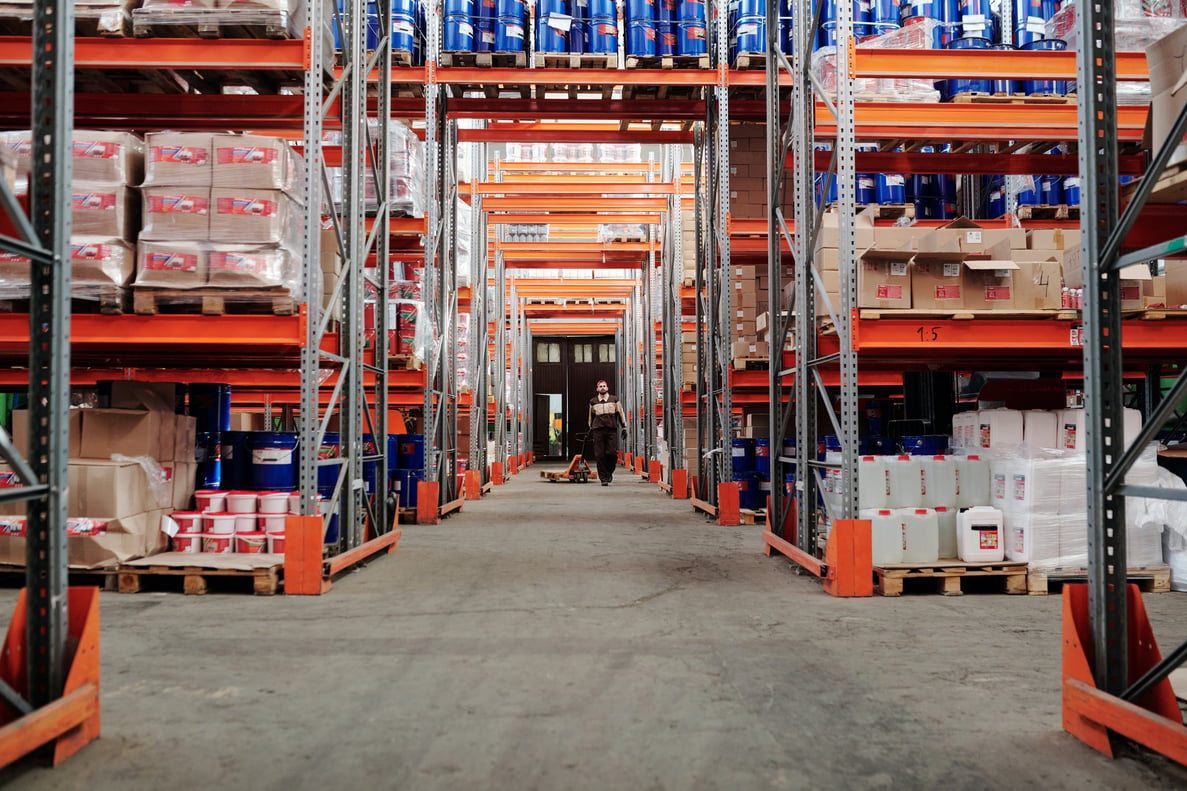In recent years, personal organization coaching has become a rapidly growing field. Busy people and families, overwhelmed by all the clutter in their lives, can now hire hyper-efficient professionals to help them regain command and control.
Many eCommerce merchants could benefit from the same type of help. However, straightening up a messy home is one thing. A fulfillment center full of employees, products, and many moving parts is quite another.
Strict protocols and rigorous procedures are needed to maintain operational authority. Simply removing things that don’t spark joy isn’t relevant here. Warehouses are in a constant state of receiving, order processing, and shipping. The potential for even the slightest disorganization to grow into something extremely disruptive is very real.
Consulting eCommerce businesses on warehouse & inventory optimization is a big part of what we do at SkuNexus. Here, we’d like to discuss some helpful tips for maximizing your organization and also explain how our powerful management software can help you achieve it.
Safety First
We’re not going to run through all the different things that can be done to ensure a safe warehouse environment. OSHA (Occupational Safety and Health Administration) has published extensive mandates and guidelines, and it is your legal responsibility to adhere to them.
The safety of your employees is paramount and goes hand-in-hand with an organized, well-run fulfillment center. Establish procedures for cleaning up spills, servicing lighting, and anything else that may help prevent a workplace accident, and do not deviate from them. Accidents will happen, but taking the steps to minimize their probability is always the best course of action.

Warehouse Layout
Each eCommerce merchant may develop and apply custom models for organizing its fulfillment center, however certain best practices can provide structure for this process. The fundamental goal is maximum efficiency for both goods and employees as they make their way through the warehouse.
Everything involved in the entire fulfillment process will both inform the warehouse layout and be impacted by it. As a result, merchants must consider all aspects of their operations in order to optimize the space available.
- Reduction of warehouse “travel time”
- All station locations (receiving, packing, shipping) and routes between them (putaway, picking) should be assessed for maximum efficiency.
- Long rows of warehouse racks create unnecessary distances which cross-aisles can help reduce.
- Most popular items can be stored nearest the shipping department.
- Items often purchased together should be stored accordingly.
- Space utilization and storage requirements
- Types and sizes of inventory can influence how wide aisles should be, the configuration of shelves, etc.
- Items requiring refrigeration, ultra-low moisture, or other special needs must be considered and grouped accordingly.
- Reorganization of an existing warehouse
- Current design inefficiencies must be identified.
- Even the most optimized processes should be reviewed periodically.
Ultimately, just as every business is unique, so too should be every fulfillment center. The layout needs to be the result of careful thought and planning that incorporate as many different variables as possible. SkuNexus can advise you by uploading a floor plan of your warehouse. Insights can then be provided on where to lay out aisles, stations, and anything else to help you achieve maximum flow.
Descriptors
Descriptors are a powerful tool for maximum warehouse organization and control. Within SkuNexus, descriptors give merchants the ability to attach additional information in any way they see fit. For example:
- Descriptor combinations may be created to match warehouse locations such as aisles, shelves, and bins.
- Descriptors carry to pick lists to make warehouse operations more efficient.
- Custom descriptors can be made for expiration dates and items that lose their value seasonally.
Carts and Totes
Knowing where any given item is at all times is a sign of a disciplined warehouse. SkuNexus allows for each individual cart and tote on the warehouse floor to have its own individual I.D. and scannable barcode. WIth this system, merchants can know where inventory is as it moves between locations.
- Carts are used to take inventory during the putaway process as well as when the pickers go to pick.
- Totes are smaller bins that can go on the carts to allow for more organization or for smaller products.
- This method is an excellent security measure in the event of things like shift changes or fire drills. Regardless of the contingency, inventory control is maintained.
Inventory Accuracy
Accurate inventory information is a critical component of warehouse management and will be reflected across all eCommerce operations. It can aid in many areas, such as:
- Demand Planning
- With accurate numbers, a business can easily calculate inventory momentum and set reorder points when they must replenish stock from vendors.
- More precise demand planning can eliminate excess or slow-moving inventory and help keep warehousing overheads low.
- Cycle Counts
- A viable cycle count demands that the items chosen can be used to determine the accuracy of the items in the warehouse overall.
- An error in the cycle count could then be expected to occur for other items in the warehouse.
- Identifying Obsolete Inventory
- If an item is not selling, decisions can be made on whether or not to keep it in stock.
- Controls For Damaged/Stolen Inventory
- A sophisticated Warehouse Management System can help document reasons for theft or damage, calculate an incidence rate, and separate affected inventory.
Pick/Pack/Ship
A number of tools to maintain order and optimize warehouse efficiency can be employed during the order fulfillment process.
- Barcode Scanning
- Just as items are scanned into inventory and tracked during putaway, so too are they continually scanned during fulfillment.
- Merchants using SkuNexus can clearly see where inventory is located, from storage to the shipping station.
- Well-Defined User Roles
- This is an often overlooked element of organized warehouse management.
- In SkuNexus, employees receive automated information limited to their strict responsibilities.
- Highly detailed pick and pack lists give floor workers exactly the information they need to both locate items and prepare them for shipping.
- Advanced Picking Strategies
- A variety of picking methods (wave, batch, zone) may be used to increase efficiency, and management software like SkuNexus is crucial to their success.
- Implementing effective complex picking strategies requires data analysis that makes a warehouse management system invaluable.
- Shipping Option Mappers
- Shipping Option Mappers are a vital part of SkuNexus that help make predetermined decisions about packing materials and shipping methods.
- This automated function takes the guesswork out of packing and shipping and helps with achieving the goal of an organized, efficient fulfillment system.
At SkuNexus, we believe that our management software's automation features are key to maximizing inventory accuracy and warehouse organization.
If you would like to learn more about how our systems can help improve your operations, please subscribe to our blog.








